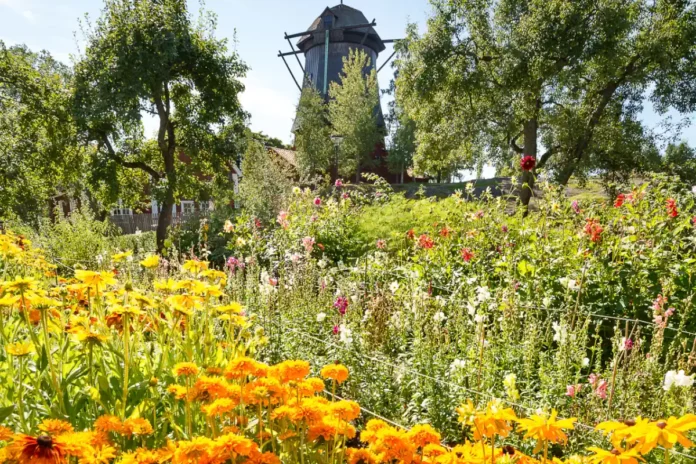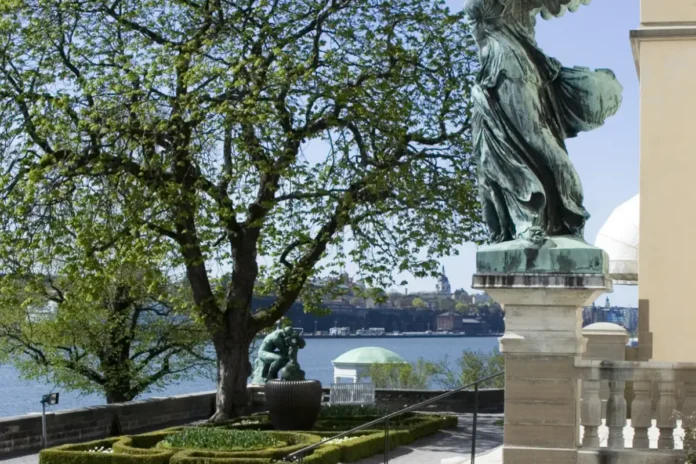The magnificent Waldemarsudde is located in Stockholm, Sweden, on the picturesque island of Djurgården. This outstanding institution, known in Swedish as Prince Eugen’s Waldemarsudde, honors the life and creative contributions of Prince Eugen (1865–1947), a well-known Swedish artist and respected member of the royal family.
The riches of Prince Eugen’s Waldemarsudde
Nestled on the picturesque island of Djurgården, Prince Eugen’s Waldemarsudde is a must-see for art enthusiasts traveling to Stockholm. This magnificent museum, once Prince Eugen’s home and acquired by him in 1899, reflects his love of art and culture. Today, it has been meticulously transformed into a premier destination for appreciating art and design.
The museum, which is renowned for its vast collection of Nordic art, is located in the center of Waldemarsudde. Here, visitors can immerse themselves in an impressive array of Prince Eugen’s own paintings alongside masterpieces by other renowned artists such as Carl Larsson, Anders Zorn, Edvard Munch, and Auguste Rodin.
Beyond the permanent collection, the staff at Prince Eugen’s Waldemarsudde frequently hosts captivating temporary exhibitions. These dynamic displays, which span a broad spectrum of art, design, and cultural themes, offer fresh and fascinating discoveries with every visit.
Explore Prince Eugen’s creative legacy and take in the classic elegance of one of Stockholm’s most treasured cultural assets. The breathtaking natural surroundings, art, and history are all expertly combined in Prince Eugen’s Waldemarsudde. Every visitor is guaranteed a memorable experience.
Explore the grounds and amenities
Take a stroll around the stunning sculpture garden, where nature and art coexist peacefully. The café offers peaceful views of the surrounding waters and the lush parkland, so take a moment to relax there. In essence, for those looking for a tranquil haven in the middle of Stockholm’s lively atmosphere, this location is perfect.
Waldemarsudde is a haven for both nature lovers and art enthusiasts. Essentially, the parkland’s breathtaking scenery and stunning waterscapes elevate your visit to an unforgettable experience. It becomes an unforgettable experience.
Artistic legacy at Prince Eugen’s Waldemarsudde
Waldemarsudde stands as a testament to the life and legacy of Prince Eugen (1865–1947), a paramount figure in Swedish art and culture. Prince Eugen was the fourth son of King Oscar II and Queen Sofia from the illustrious House of Bernadotte.

Prince Eugen developed a deep love of the arts at a young age. While studying in Paris and Stockholm, he refined his painting abilities, becoming an expert in stunning landscape and portrait paintings.
His paintings are praised for their superb use of light and color, which perfectly conveys both human emotion and the tranquil beauty of the natural world. In parallel with his painting career, he accumulated an impressive collection of Swedish and foreign artwork.
Prince Eugen’s impact extended beyond the canvas. As chairman of the Royal Academy of Fine Arts, he played a significant role in Sweden’s cultural landscape. Moreover, he was a committed environmentalist who championed the preservation of several natural landscapes throughout Sweden. Prince Eugen made sure that generations would be able to appreciate their beauty.
The influence of Prince Eugen: From estate to museum
Prince Eugen left his estate to the Swedish government after his death in 1947. The Swedish government established Prince Eugen’s Waldemarsudde museum as a result of his bequest. The museum’s display of his works and collection cements his position as one of Sweden’s most significant artists and cultural icons.
Waldemarsudde is a must-see for tourists seeking to immerse themselves in Swedish art and history. Visitors can see Prince Eugen’s artistic genius on display there. Additionally, the collection offers a varied exploration of Swedish and global artistic pursuits.


















